Protective hair braids have been a cornerstone of hair care for centuries, offering both stunning style and functional benefits for your tresses. These versatile braiding techniques shield your natural hair from environmental stressors, manipulation damage, and breakage while allowing for incredible creativity in your look. Whether you’re looking to grow your hair, give it a break from heat styling, or simply try a new aesthetic, protective braids offer solutions for all hair types and textures.
In this comprehensive guide, we’ll explore the rich cultural heritage of protective braiding, showcase popular styles, highlight key benefits, and provide expert maintenance tips to keep your braids and natural hair underneath in optimal condition. Let’s dive into the world of protective hair braids and discover why they remain a timeless choice for hair health and style.
The Cultural Heritage of Protective Hair Braids
Protective braiding techniques have been passed down through generations in many cultures
Protective hair braids have deep roots in African and African-American culture, dating back thousands of years. These intricate braiding techniques weren’t just about aesthetics—they served as cultural identifiers, indicating a person’s tribe, age, marital status, wealth, and social position. The art of braiding was passed down through generations, creating a powerful connection to heritage and identity.
In many African cultures, hair braiding was (and still is) a social activity, bringing communities together. The time-intensive process allowed for storytelling, bonding, and the transmission of cultural knowledge. Today, protective braids continue to hold cultural significance while evolving into diverse styles embraced by people of all backgrounds for their practical benefits and beauty.
Popular Types of Protective Hair Braids
The world of protective hair braids offers incredible variety, with styles ranging from simple and classic to intricate and artistic. Here are some of the most popular protective braid styles you might consider:

Box braids are one of the most versatile protective styles
- Box Braids: Named for their square-shaped partings, these individual braids can be styled in countless ways and last 6-8 weeks with proper care.
- Knotless Braids: A modern take on box braids that starts with your natural hair and gradually feeds in extensions, creating less tension at the roots.
- Cornrows: Braids that lie flat against the scalp in straight rows, created by braiding underhand in an upward motion.
- Fulani Braids: A style featuring a combination of cornrows and hanging braids, often adorned with beads and cowrie shells.
- Goddess Braids: Thicker cornrows that are raised higher than traditional ones, creating a more dramatic look.
- Senegalese Twists: Two-strand twists created with extensions that have a smooth, rope-like appearance.
- Marley Twists: Similar to Senegalese twists but created with textured hair for a more natural, matte finish.
- Passion Twists: A combination of Senegalese twists and goddess locs with a curly, bohemian finish.
- Faux Locs: Temporary locs created with extensions that mimic traditional locs without the commitment.
- Butterfly Locs: A variation of faux locs with a deliberately messy, distressed look and curly loops.

Cornrows can be styled in various patterns and updos
Each protective braid style offers unique benefits and aesthetic qualities. When choosing a style, consider your hair type, desired maintenance level, and how long you want the style to last. Consulting with a professional braider can help you select the best protective hair braids for your specific needs.
5 Key Benefits of Protective Hair Braids
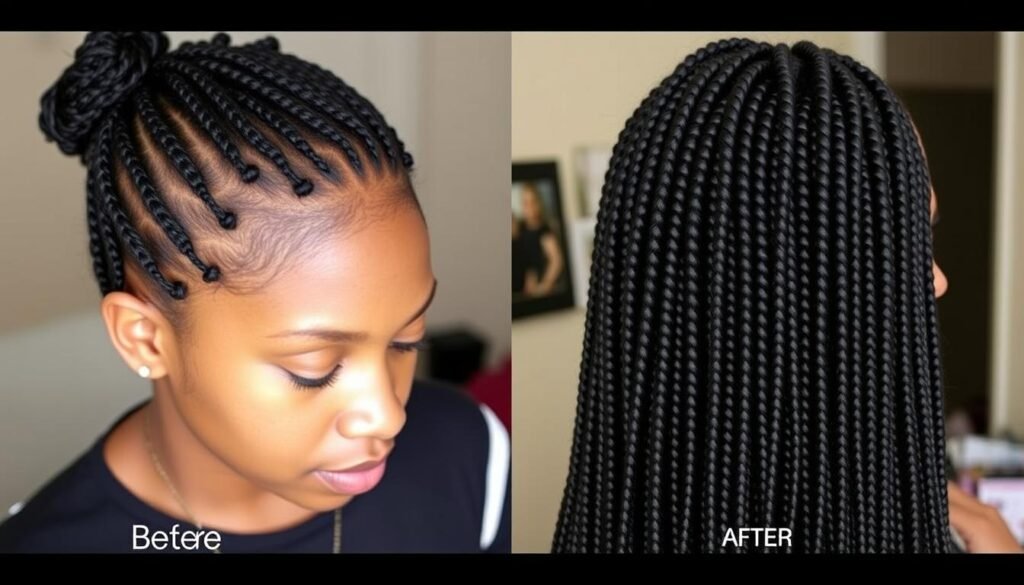
Protective styles can significantly improve hair length retention
Benefits of Protective Hair Braids
- Promotes Hair Growth: By keeping your ends tucked away and minimizing manipulation, protective hair braids reduce breakage, allowing your hair to retain length and grow longer over time.
- Reduces Breakage: Protective styles minimize daily handling and exposure to environmental stressors that can cause hair damage and breakage.
- Versatility in Styling: From elegant updos to casual looks, protective braids offer countless styling options that can be adapted for any occasion.
- Low Maintenance: Once installed, most protective braid styles require minimal daily styling, saving you time and reducing manipulation damage.
- Scalp Protection: Braids shield your scalp from harsh weather conditions, including sun exposure, cold temperatures, and dry environments.
Beyond these primary benefits, protective hair braids also offer practical advantages for active lifestyles. They stay secure during workouts, swimming, and other physical activities. Additionally, they can be a time-saving solution for busy schedules, as they eliminate the need for daily styling while still maintaining a polished appearance.
Step-by-Step Maintenance Guide for Protective Hair Braids
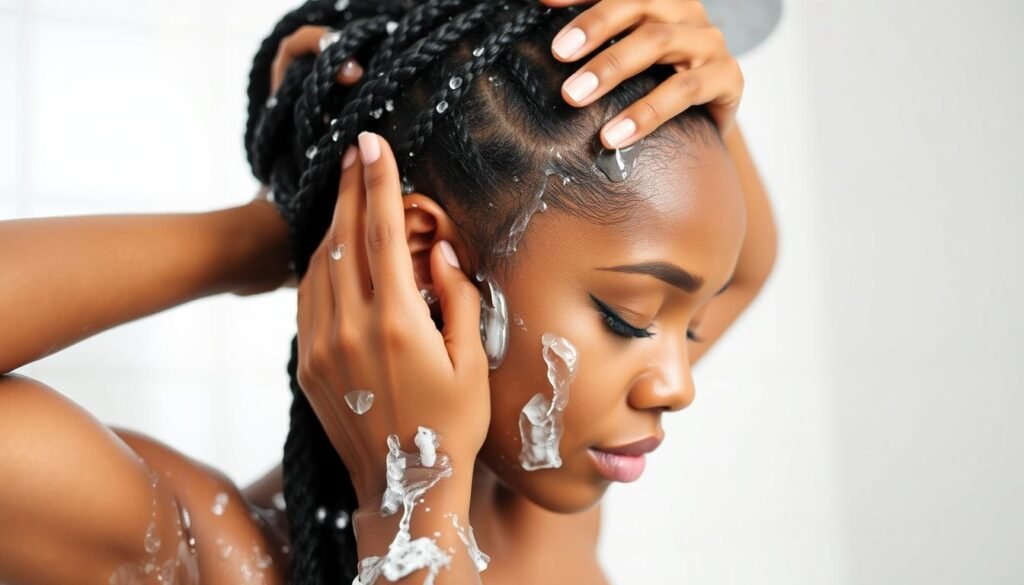
Proper washing technique is essential for maintaining clean braids
Proper maintenance is crucial for keeping your protective hair braids looking fresh and ensuring the health of your natural hair underneath. Follow these steps to extend the life of your style and protect your hair:
- Washing Your Braids
Cleanse your scalp and braids every 2-3 weeks using a diluted shampoo in an applicator bottle. Focus on your scalp, gently massage the solution between your braids, and rinse thoroughly without rubbing or disturbing the braid pattern.
- Moisturizing Regularly
Keep your scalp and hair hydrated by applying a water-based leave-in conditioner spray 2-3 times per week. Follow with a lightweight oil to seal in moisture and prevent dryness.
- Nighttime Protection
Always sleep with a silk or satin bonnet, scarf, or pillowcase to reduce friction, prevent frizz, and maintain moisture. For longer braids, loosely gather them at the top of your head before covering.
- Edge Care
Apply a light edge control product and gentle oil to your edges to keep them smooth and prevent breakage in these delicate areas.
- Managing Frizz
To refresh your braids, apply a small amount of mousse to your hands and gently smooth over frizzy areas. Avoid heavy products that can cause buildup.
- Knowing When to Remove
Most protective braid styles should be removed after 6-8 weeks maximum. Keeping them in longer can lead to excessive tangling, matting, and breakage of your natural hair.
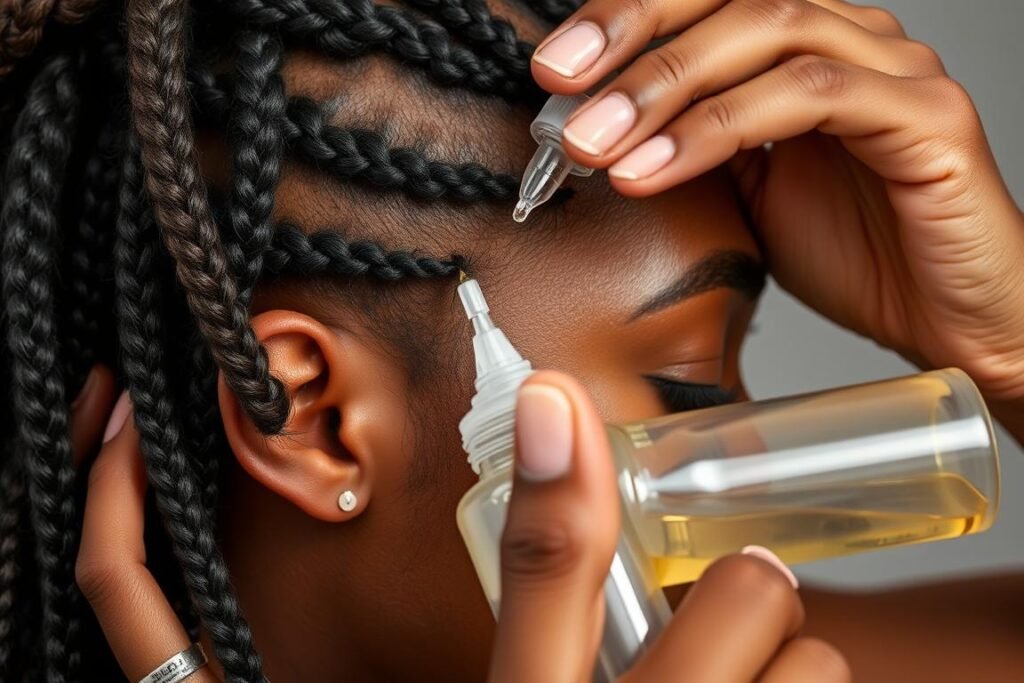
Regular scalp oiling helps maintain moisture between washes
Pro Tip: After removing your protective braids, give your hair a 1-2 week break before installing a new style. During this time, focus on deep conditioning, trimming ends if needed, and allowing your scalp to breathe.
Creative Styling Ideas for Protective Hair Braids

Elevate your protective style with elegant accessories
One of the greatest advantages of protective hair braids is their versatility. Once installed, you can transform your look for different occasions without compromising the protective benefits. Here are some creative styling ideas:
1. Elegant Updos for Special Occasions
Transform your braids into a sophisticated updo by gathering them into a high bun or twisted crown. Secure with bobby pins that match your hair color and add decorative pins or flowers for extra glamour. This style works beautifully for weddings, formal events, or professional settings.
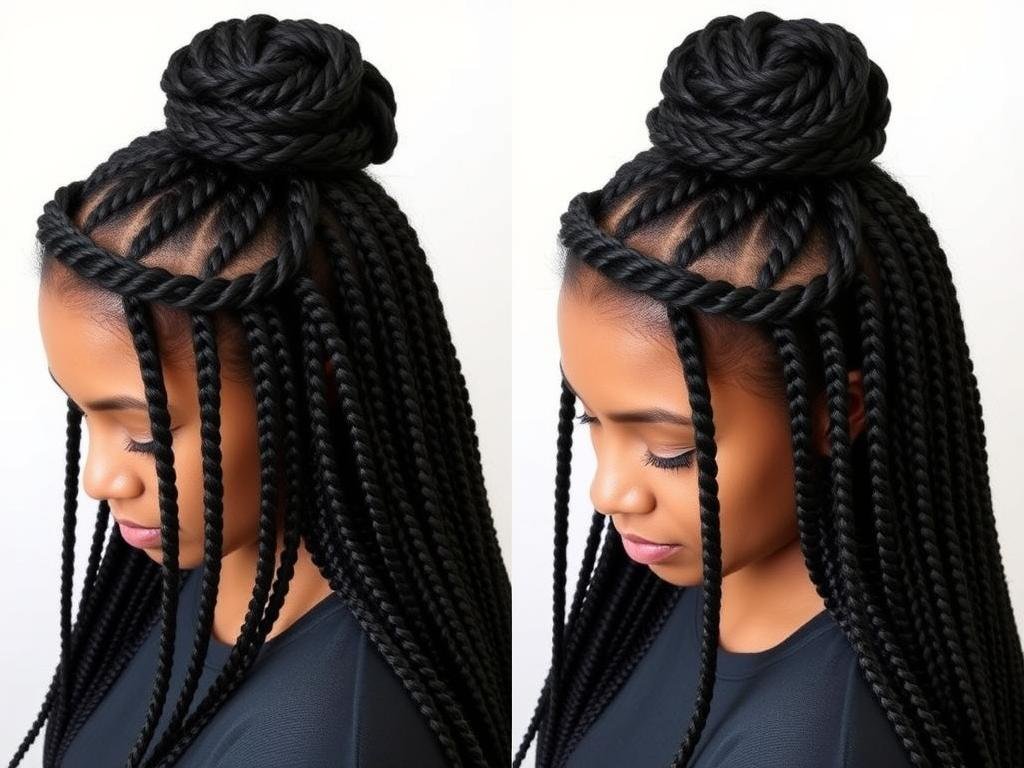
Half-up styles offer versatility for everyday wear
2. Half-Up Styles for Everyday Versatility
Create a playful yet polished look by pulling the top section of your braids into a half-up style. Try a half-bun, ponytail, or simply secure with a decorative clip. This versatile option works for casual outings, work, or school while keeping braids out of your face.
3. Accessorize with Cuffs, Beads, and Wraps
Elevate your protective braids with accessories like metal cuffs, wooden beads, colorful thread wraps, or fabric scarves. These additions not only refresh your style but can also hide new growth or frizz as your braids age. Mix and match accessories to create unique looks that express your personal style.
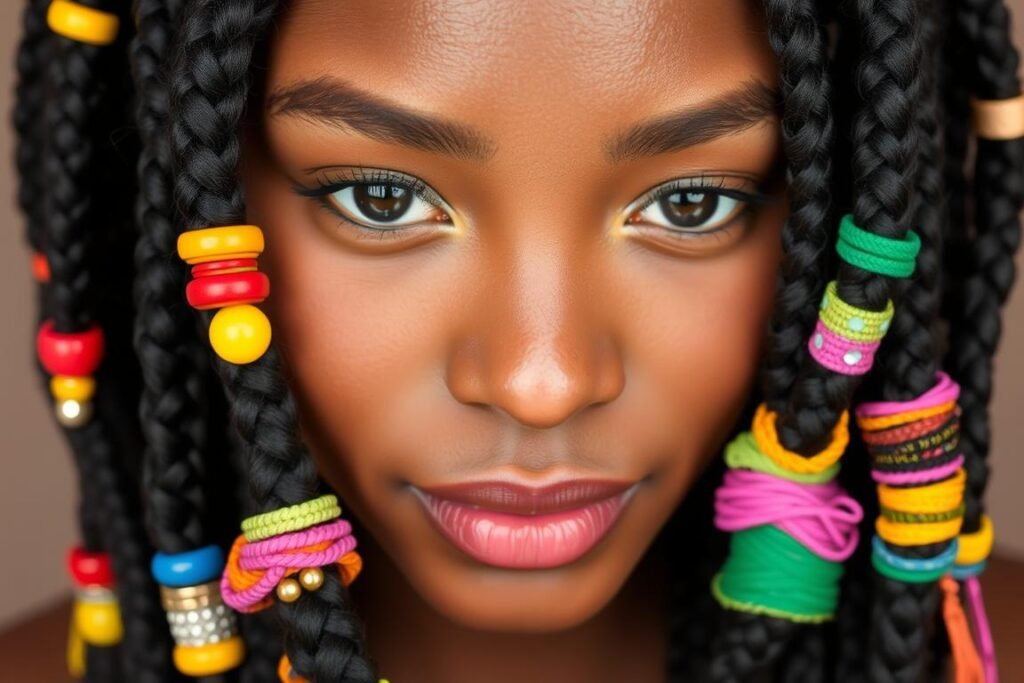
Accessories can refresh your style and express personality
“Protective styles aren’t just about hair health—they’re a canvas for self-expression. The way you style your braids can reflect your mood, personality, and cultural connections.”
Myth-Busting: Common Misconceptions About Protective Hair Braids
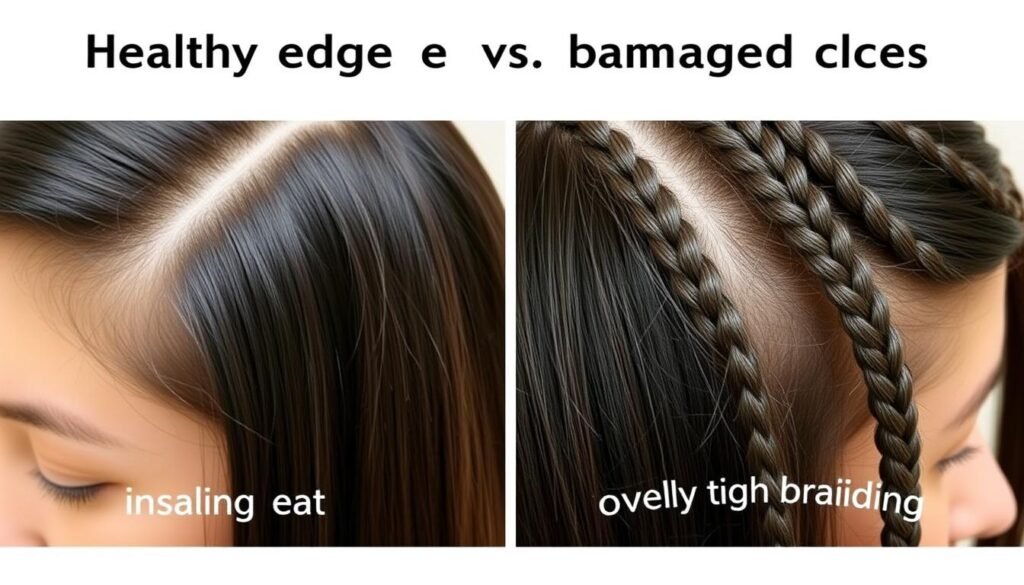
Proper installation prevents damage to delicate edges
Myth #1: Protective braids always damage your hairline
Fact: When installed properly without excessive tension, protective hair braids should not damage your hairline. Damage occurs when braids are too tight, too heavy, or left in for too long. Working with a skilled stylist who prioritizes hair health and taking breaks between styles can help maintain a healthy hairline.
Myth #2: You can’t wash your hair in protective braids
Fact: Regular cleansing is essential for scalp health while wearing protective styles. The key is using proper techniques—diluted shampoo in an applicator bottle, focusing on the scalp, and thorough but gentle rinsing. Avoiding washing leads to buildup, itching, and potential scalp issues.
Myth #3: Protective styles guarantee hair growth
Fact: Protective hair braids can help retain length by reducing breakage, but they don’t directly increase your hair’s growth rate. Your hair grows at its genetically determined rate regardless of style. What protective styles do is help you keep the length you grow by minimizing damage and breakage.
Myth #4: Protective styles are only for certain hair types
Fact: While protective braiding has strong cultural roots in African and African-American communities, these styles can benefit many hair types and textures. The key is adapting the technique to suit your specific hair needs and working with a stylist experienced with your hair type.
Myth #5: The tighter the braids, the longer they’ll last
Fact: Overly tight braids can cause pain, headaches, and even traction alopecia (hair loss from tension). A skilled braider can create secure, long-lasting protective styles without excessive tension. If your braids hurt or cause bumps, they’re too tight and should be redone.
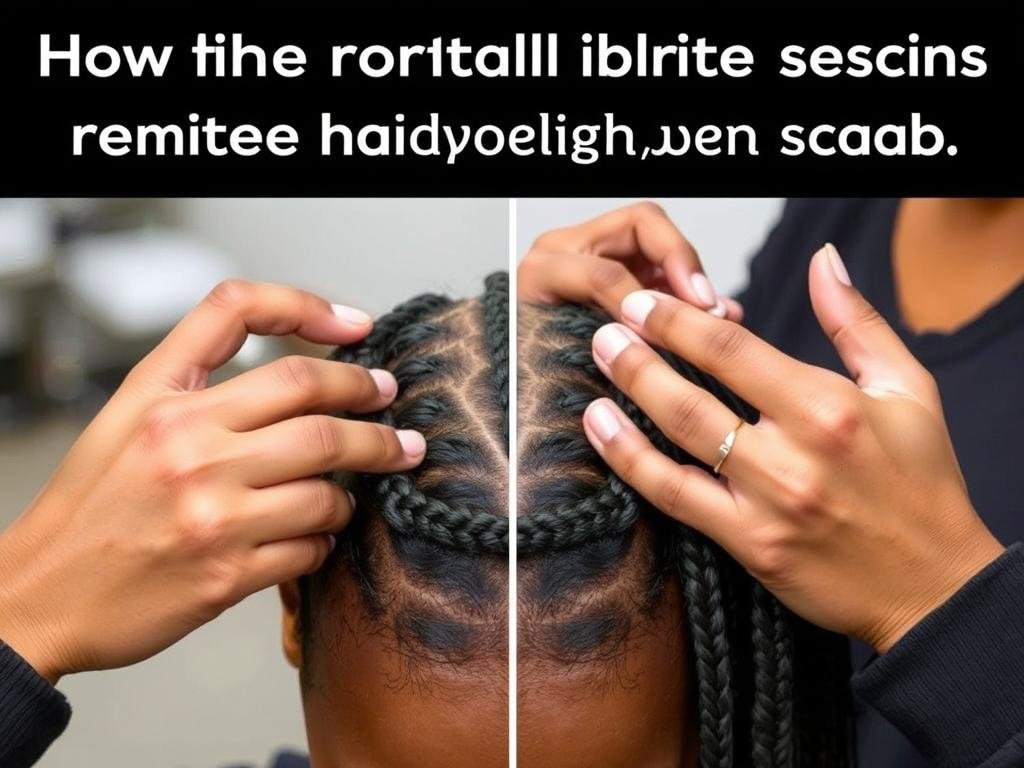
Professional installation with proper tension is key to healthy protective styling
Preparing Your Hair for Protective Braids
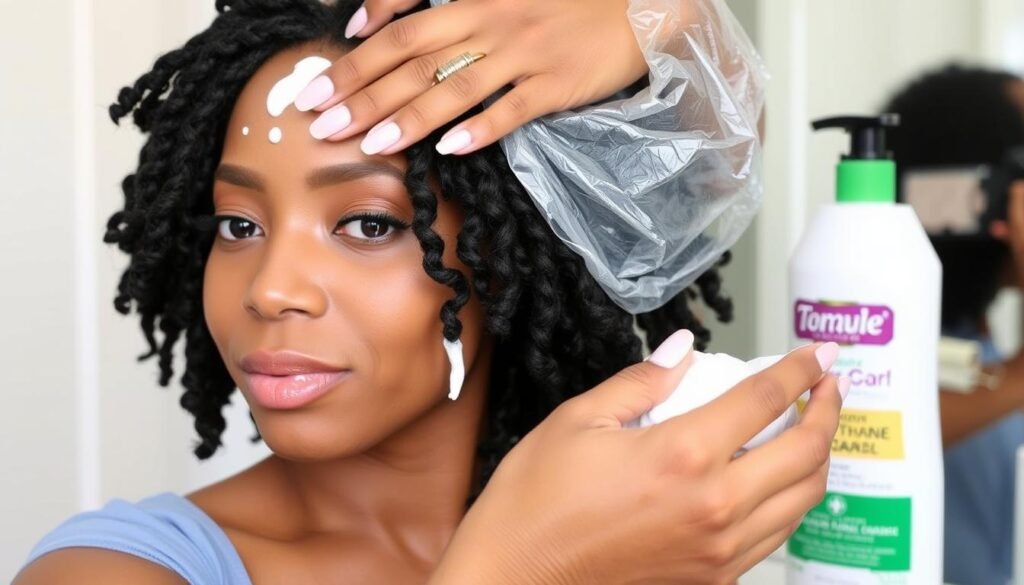
Proper preparation ensures your hair stays healthy under protective styles
Before installing protective hair braids, proper preparation is essential to ensure your natural hair remains healthy throughout the styling period. Follow these steps for optimal results:
1. Cleanse Thoroughly
Start with a clarifying shampoo to remove all product buildup, followed by a moisturizing shampoo. Clean hair provides the best foundation for braids and prevents itching and flaking during wear.
2. Deep Condition
Apply a protein-balanced deep conditioner to strengthen your hair before installation. Consider using heat (under a hooded dryer or with a heat cap) to enhance penetration of the conditioning treatment.
3. Detangle Completely
Use a wide-tooth comb or detangling brush to remove all knots, working from ends to roots. Thoroughly detangled hair makes the braiding process smoother and prevents painful pulling.
4. Trim Ends If Needed
If you have split or damaged ends, trim them before braiding. This prevents further damage and ensures your hair remains healthy while in the protective style.
Important: Make sure your hair is completely dry before braiding to prevent mildew and mold growth, especially if you’re adding extensions. Some stylists prefer slightly damp hair for installation, but it should be at least 90% dry.
Why Protective Hair Braids Remain a Timeless Choice

Protective braids offer both beauty and functionality for all hair journeys
Protective hair braids have stood the test of time for good reason. They beautifully balance form and function, offering stunning aesthetic options while simultaneously protecting and nurturing your natural hair. From their rich cultural heritage to their practical benefits for modern lifestyles, these versatile styles continue to evolve while maintaining their core purpose.
Whether you’re looking to grow your hair, give it a break from heat styling, or simply explore new looks, protective braids offer solutions for all hair types and textures. By understanding proper installation, maintenance, and removal techniques, you can enjoy these beautiful styles while keeping your natural hair healthy and thriving.
Remember that the key to successful protective styling lies in balance—protecting your hair without causing stress or damage. With the right approach, protective hair braids can be a valuable part of your hair care routine, helping you achieve your hair goals while expressing your personal style.
Share Your Protective Braid Journey
We’d love to hear about your experiences with protective hair braids! What styles have worked best for you? Do you have any maintenance tips or styling ideas to share with our community? Drop a comment below with your stories, questions, or photos of your favorite protective braid styles.



